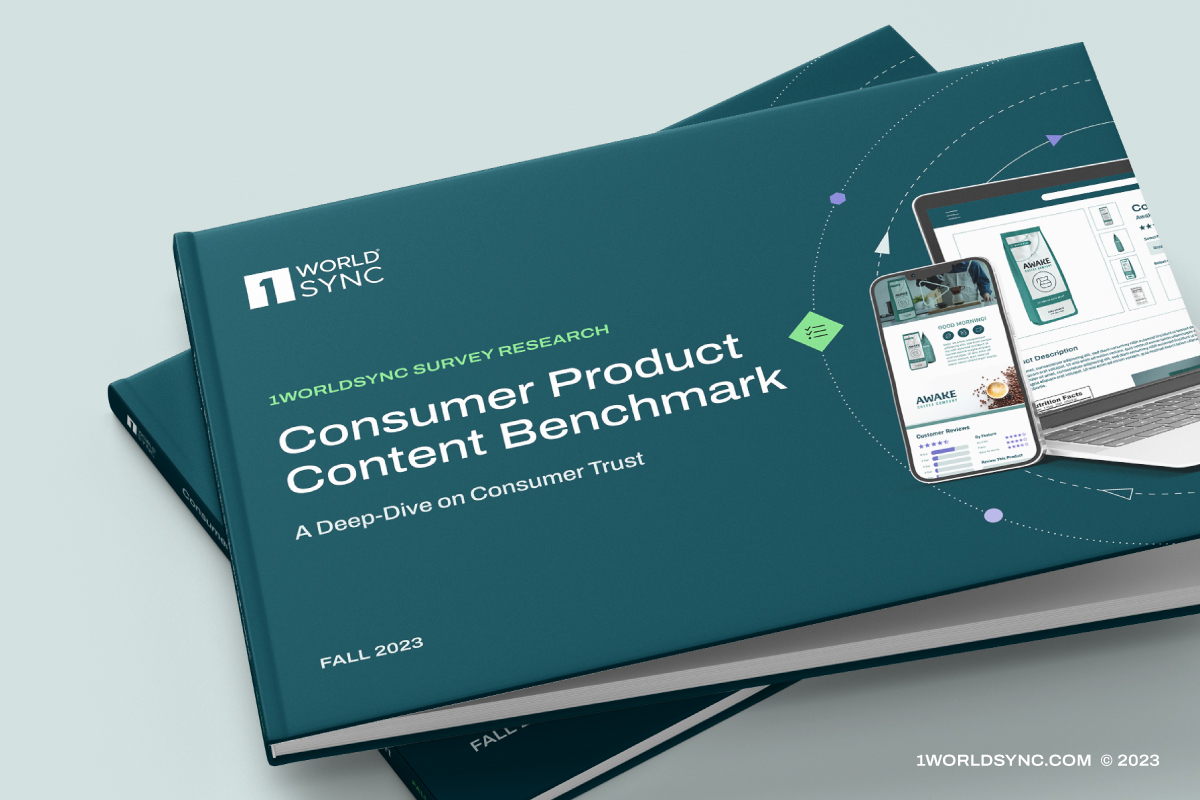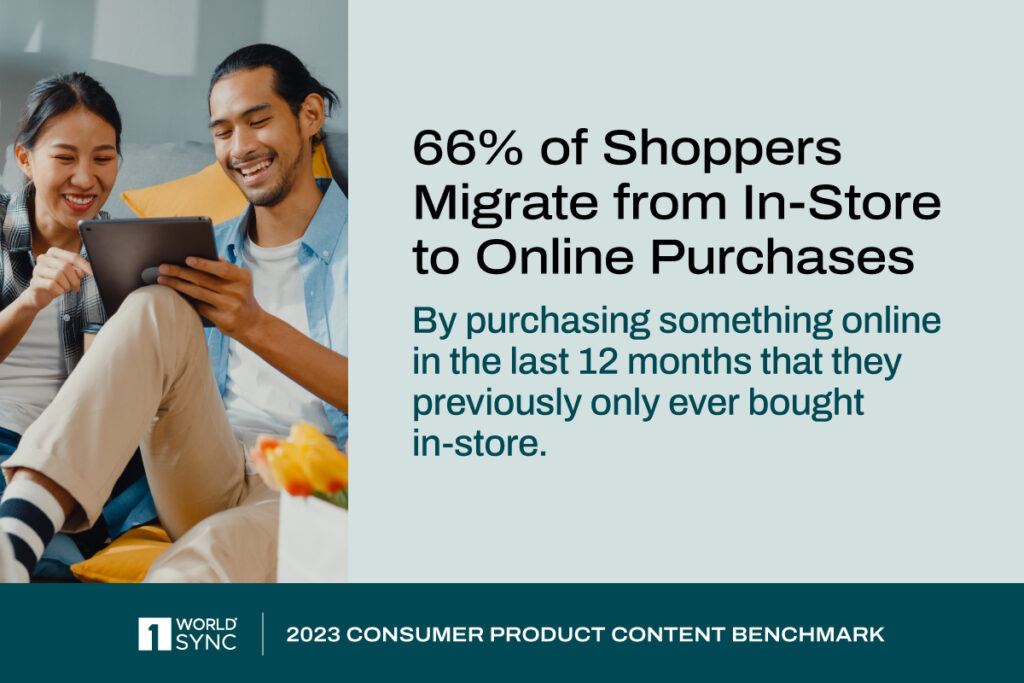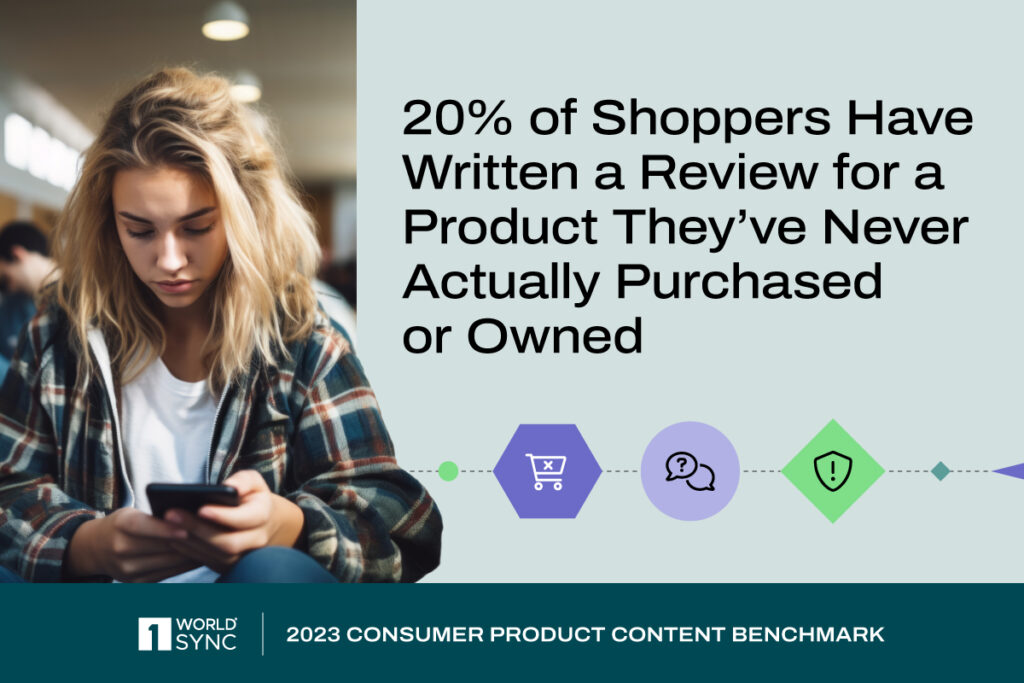Digital Shopping Trends: 66% of Shoppers Migrate from In-Store to Online Purchases, According to 1WorldSync Data
October 18, 2023

Digital Shopping Trends: 66% of Shoppers Migrate from In-Store to Online Purchases, According to 1WorldSync Data

Third Annual Product Content Benchmark Survey reveals consumers, on average, conduct research online before 61% of shopping trips, a 25% increase from 2022.
CHICAGO – October 18, 2023 – Today, 1WorldSync, the leading global product content orchestration platform, released its 2023 Consumer Product Content Benchmark Report featuring insights collected from 1,500 shoppers across the United States and Canada. This report underscores that strong product content, plus user-generated content, are the building blocks of consumer trust as the line between digital and physical retail merge.
Read the full report: https://1worldsync.com/2023-consumer-product-content-benchmark/
Consumers take a meticulous approach in today’s digital landscape before committing to purchases, including conducting research online and in-store. According to the survey, 87% of shoppers use their smartphone to research a product while in-store at least some of the time, citing price comparisons (72%), customer reviews (69%) and detailed product descriptions (52%) as the information that matters most.
Online shopping, meanwhile, continues to accelerate. Two-thirds (66%) of shoppers have purchased an item online in the last 12 months that they previously only ever bought in-store, with clothing & accessories (50%), health & personal care (42%) and beauty & cosmetics (35%) leading the migration of in-store to online purchases. The percentage of online shoppers in new categories is down from the height of the pandemic (82% in 2021) and only slightly from last year’s survey (68%)—indicating sustained consumer comfort with online shopping in traditional brick-and-mortar retail categories.
“In today’s retail landscape, online and in-store shopping experiences are intrinsically intertwined, each bolstering the other to meet the evolving demands of modern consumers,” said Steve Sivitter, CEO of 1WorldSync. “The boundaries between digital and physical retail channels are dissolving, giving rise to a ‘phygital’ shopping era where consumers seamlessly merge online and in-store shopping to make informed in-store purchases and vice versa. This interconnected ecosystem reflects the future of retail, demonstrating the complementary and indispensable relationship between online and brick-and-mortar platforms in enhancing customer experience and choice.”
The survey found that even a majority (61%) of in-store shopping trips begin online, a 25% increase from 2022.
Reviews Provide Missing Product Context
The indispensable role of user-generated content (UGC) in the online shopping experience stands out, with two-thirds of online shoppers reporting that customer reviews significantly influence a purchase decision. Moreover, 53% of shoppers under the age of 35 will not buy a product with less than five reviews. But the dark cloud of negative reviews looms large; as few as 4-5 unfavorable reviews can deter nearly half (43%) of potential consumers. Alarmingly, 20% admit to penning reviews for products they haven’t even bought, emphasizing the need for companies to verify feedback for reliability and legitimacy as part of their omnichannel strategy.
Influencers’ Influence on Consumer Behavior
Influencers may not have the purchase-driving power once thought. Despite the overwhelming presence of influencers on popular social channels, only 40% of consumers report acting on an influencer’s recommendation in the last 12 months. Additionally, 61% of those who did make a purchase found their recommendation did not accurately reflect the product. The data also shows that women are slightly more likely to make a purchase based on the recommendation of influencers than men. And although influencers are around every swipe, the report reveals traditional personal networks and brand messaging remain pivotal in shaping purchasing decisions.
Emerging Technology Drives Shopping Behaviors
A palpable wave of technological advancement is altering consumer behavior. Augmented Reality (AR) tools are finding their niche, with 35% of consumers deploying them during mobile shopping and 57% relying on these tools to help visualize product dimensions. In contrast, 78% of consumers remain unaware of/have yet to adopt AI tools for product searches, suggesting this technology remains in the early phases of use during online shopping.
Additional findings from the report include:
- Delivery Services: 23% of consumers are shopping less with delivery services/courier apps this year compared to 2022, indicating consumers are more comfortable visiting stores and restaurants in person than they were prior.
- Fast Fashion: Despite their growing popularity, 46% of shoppers have never shopped at budget or fast-fashion e-commerce sites like Temu or Shein, citing the perception of poor quality products, untrustworthy reputation and unfamiliarity as reasons why they have not shopped with the budget-friendly sites.
- Returns: 48% of consumers will stop shopping from a brand after making two to three returns, with more than half of shoppers citing misleading or poor product content as the reason fueling their returns.
- Holiday Shopping: The average shopper predicts they will do approximately 60% of their holiday shopping online, a reflection of the continued trend toward e-commerce, driven by convenience and a wider variety of choices.
- Political Affiliation: Social media often amplifies the perception that political affiliation significantly affects brands. However, due to rapid social media cycles, consumers often move on to the next trend, lending to a limited number of shoppers (17%) who report they have stopped purchasing a specific brand due to political affiliation or position in 2022.
Understanding the nuanced behaviors and expectations of today’s digital consumer is vital for brands. The Consumer Product Content Benchmark Report stresses digital influence on guiding consumer purchasing decisions, including the increase in online research, both at-home and in-store via smartphones. And, while outside factors may direct shoppers to product pages, the quality of product content and UGC often hold more weight in the final purchase decision. Brands cannot discount the importance of genuine content, the power of reviews and the potential for emerging technologies to enhance the shopping journey.
To learn more about 1WorldSync’s omnichannel product content solutions or the 2023 Consumer Product Content Benchmark Report, visit 1WorldSync.com.
###
About the Report
This survey was conducted online by 1WorldSync via Pollfish in August 2023 among a randomized, representative sample of 1,500 online shoppers in the U.S. & Canada over the age of 18. Margin of error +/- 3% at the 95% confidence level. Results displayed represent the population-weighted, percentage share of the sample selecting each option.
About 1WorldSync
1WorldSync® is the leader in Product Content Orchestration, enabling more than 17,000 companies in over 60 countries to simplify the creation and distribution of impactful content that’s accurate, consistent and relevant everywhere commerce happens. Through its technology platform and expert services, 1WorldSync—backed by global investment firm Battery Ventures—solves revenue-impacting product content challenges faced by leading brands and retailers in the CPG/retail, DIY, consumer electronics, healthcare and foodservice industries. 1WorldSync is one of the only product content providers and GDSN Data Pools to achieve ISO Certification 27001.
Media Contact
Tori Klimczak
BLASTmedia for 1WorldSync


